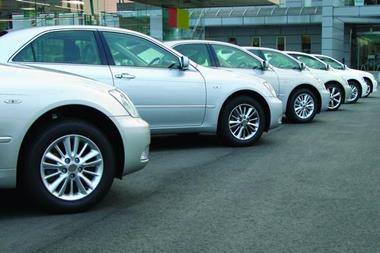When Norwich Union put on hold its pay-as-you-drive insurance scheme, some observers concluded it was just one of those ideas that catch the imagination but ultimately disappoint. But EMB believes telematics-rated motor insurance is inevitable, desirable and will appeal to customers. Here are 10 reasons why.
1 It works
All drivers can spot high-risk driving both in themselves and others. So it’s no surprise that using telematics to monitor when, where and how we drive can differentiate high from low-risk drivers. Norwich Union reported a 30% drop in claims costs for telematics, which implies that it doubled the quality of risk assessment. Any insurer having twice the ability to underwrite and price risk can take the market by storm.
2 It’s getting cheaper and cheaper
Computer costs are reducing in real terms.
A telematics device that cost £300 in 2003 could be delivered for £50 in 2008 and is heading for £8 in 2013. At some point soon, the economics switch to “why wouldn’t you?” rather than “why would you?”.
3 DIY installation
The cost of installation has been prohibitive, but not any more. A device that simply plugs into a car’s OBD-II port can now be mailed to the customer.
4 DIY re-installation
When customers change their cars, the device unplugs from one into the other – it sounds trivial but is another massive shift in the economics of telematics.
5 It doesn’t have to be invented in the UK
When an insurer cracks open telematics risk assessment in the USA, Germany or South Africa, it could very soon move into the “plug and play” space in the UK with little or no modification.
6 Progressive may have cracked it
Progressive, one of the largest motor insurers in the USA, is rolling out a telematics product in 10 states – and counting. It could be calling the industry’s bluff, but the company has a strong track record of successful innovation.
7 Customers like telematics
Safer drivers will buy telematics so they can benefit from their lower risk rating. Worries about privacy are politically correct, so companies need to be aware that the protection given to data by law is something that they cannot afford to let slip.
8 It makes driving safer
People drive more safely when they are being monitored. The fact of being observed brings about improvement. I have had telematics in my own car and, yes, it changed the way that I drove.
9 It decommoditises motor insurance and improves customer relationships
Each customer ultimately will get individual prices with telematics insurance products, using personalised data. And the way he or she is identified as suitable for telematics will encourage behavioural and values-based marketing. This gives insurers a platform on which to build stronger customer relationships.
10 It cuts claims costs
Having details of the time, speed and driving actions can help claims handling. Fraudulent whiplash claims have been successfully challenged by demonstrating that the cars were moving at a snail’s pace. Stolen vehicles can be tracked. Disputes over liability will be simplified.
Postscript
Julian Beardsworth is a director at EMB, an actuarial and business consultant
Hosted by comedian and actor Tom Allen, 34 Gold, 23 Silver and 22 Bronze awards were handed out across an amazing 34 categories recognising brilliance and innovation right across the breadth of UK general insurance.













































No comments yet